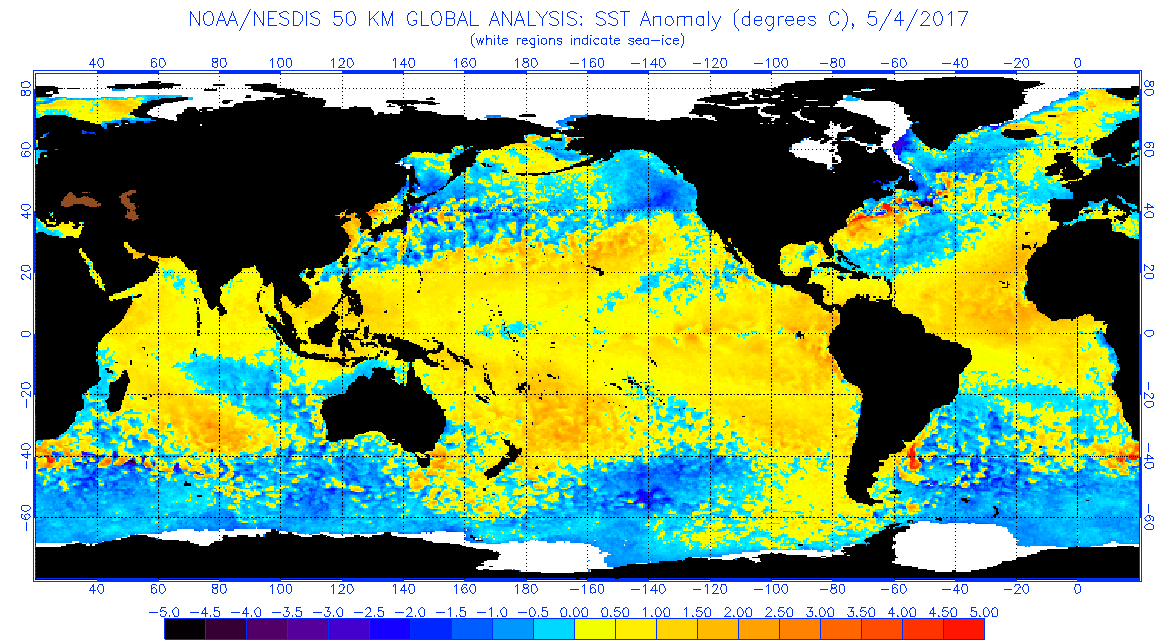DorkyMcDorkface wrote:cycloneye wrote:DorkyMcDorkface wrote:Almost a "bifurcated" look with the well above avg subtropics and southern half of the MDR, with the anoms in between being above avg but not to the extent of the other two areas listed. I could definitely see at least some modest stability issues arising from the subtropical warmth, but it's not like the MDR proper is cool, so perhaps not overwhelmingly so? I'm probably just spitballing here though
Maybe some wavebreaking issues like in 2022?
Could be given what the CSU highlighted:
https://x.com/AndyHazelton/status/1907802532732084692
I would say these are two separate issues. That is, SSTA gradient (thermodynamic issue) is not the primary driver for Rossby wave breaking (a dynamic/barotropic issue). However, the overall atmospheric pattern/teleconnections are often similar (e.g., enhanced subtropical high -> increased surface heating/lower-tropospheric warmth in the subtropics -> amplified subtropical jet stream). We can have a SSTA gradient issue without Rossby wave breaking (RWB), and vice versa. These are the primary two negatives I see heading into this season, and I'll break it down below.
Stability Issues from Warmer Subtropical/North Atlantic SSTAsWhen the subtropics/North Atlantic are warmer than the MDR, the meridional temperature gradient weakens, reducing the instability needed for deep convection in the MDR and Caribbean. This leads to:
- Increased Static Stability: Warmer subtropical SSTs heat the lower troposphere, creating a stronger temperature inversion or shallower lapse rate, inhibiting vertical motion and convection.
- Reduced Convection: Cooler MDR SSTs relative to the subtropics limit latent heat release, weakening the convective potential of African easterly waves (AEWs) and TC genesis.
- Potential Wind Shear Increase: Altered circulation patterns may enhance vertical wind shear, further stabilizing the atmosphere by disrupting TC organization.
These are primarily thermodynamic, driven by changes in the vertical temperature profile and moisture availability. Warmer subtropical SSTs -> increased lower-tropospheric temperatures -> reduced lapse rate and stabilizing the atmosphere locally in the MDR. This directly weakens convection without necessarily involving large-scale dynamical disruptions.
Stability Issues from Rossby Wave BreakingRWB occurs when large-scale Rossby waves overturn, often due to interactions with the subtropical or midlatitude jet stream, leading to equatorward intrusions of troughs or anticyclones:
- Strengthening the Subtropical High and Jet Stream: Enhanced surface heating strengthens the Azores-Bermuda High and amplifies the jet stream, promoting wave amplification and breaking.
- Facilitating Trough Intrusions: Warmer SSTs can modulate upper-level circulation, encouraging Rossby waves to propagate equatorward and break, introducing high shear and dry air into the tropics.
This is a dynamic process involving the nonlinear overturning of Rossby waves in the upper troposphere/lower stratosphere. RWB introduces extratropical influences (e.g., troughs, shear, dry air) into the tropics, altering the large-scale circulation and creating unfavorable conditions for TC genesis. This can lead to increased vertical wind shear, additional subsidence dumping in the MDR, and advection of continental dry air. We typically see this occur when there is a sharp temperature gradient between the subtropics/North Atlantic and the continental air over North America. 2013 is a great example of this, because our thermohaline circulation and overall atmospheric circulation remained in a spring time pattern (meaning we had a continual parade of mid-latitude systems even into August/September that created a strong temperature gradient and introduced Rossby wave breaking).















